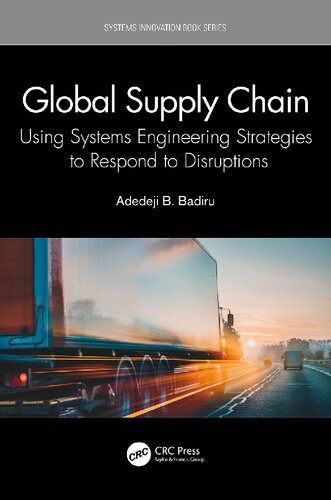

Most ebook files are in PDF format, so you can easily read them using various software such as Foxit Reader or directly on the Google Chrome browser.
Some ebook files are released by publishers in other formats such as .awz, .mobi, .epub, .fb2, etc. You may need to install specific software to read these formats on mobile/PC, such as Calibre.
Please read the tutorial at this link: https://ebookbell.com/faq
We offer FREE conversion to the popular formats you request; however, this may take some time. Therefore, right after payment, please email us, and we will try to provide the service as quickly as possible.
For some exceptional file formats or broken links (if any), please refrain from opening any disputes. Instead, email us first, and we will try to assist within a maximum of 6 hours.
EbookBell Team

5.0
78 reviewsThis book uses a systems-based approach of the tools and techniques of industrial engineering applied to the global supply chain. The specific application addressed in this book is the supply chain, which is disrupted due to COVID-19 and the closure of several plants in the chain.
The book presents the basic tools of industrial engineering applicable to a dynamic supply chain system. It recognizes the nuances of human factors in any commerce and industry and covers the basic elements of a supply chain from a systems perspective. It highlights the global impacts of disruption caused by COVID-19 and leverages the Triple C Model of system communication, cooperation, and coordination. It also illustrates the applicability of the DEJI systems model for supply chain design, evaluation, justification, and integration. Supply chain modeling optimization examples are offered and the introduction of a newly-developed learning curve model, applied to the global supply chain, is presented. The contents of the book are applicable not only to the food supply chain, but also to the supply of other commodities, including physical products, services, and desired end results.
The book is written for engineers working in production, civil, mechanical, and other industries. It will be of interest to engineering managers, consultants as well as those involved with business management. University students and instructors will also find this book useful as a general reference.